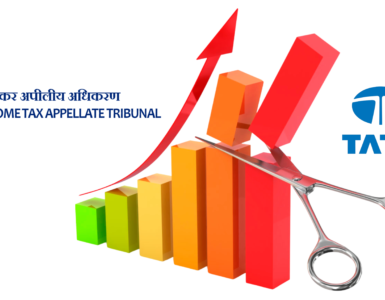In case of combination by way of Merger or Acquisition coming under the purview of the Competition Act 2002, when Competition Commission of India (CCI) on receipt of notice from the Parties under Section 6 of the Act or on its Suo moto inquiry, makes its prima facie opinion that the combination is causing or likely to cause appreciable adverse effect on the competition (AAEC), it starts investigation in to the combination. In that case, the parties to the combination must publish required information in Form IV and if found desired, CCI may invite comments from any person or member of public on the proposed combination by publishing the details provided in Form IV.
Now, it is important to understand when and how CCI forms it prima facie opinion that the combination is causing or likely to cause appreciable adverse effect on the competition.
Section 20 (4) of the Competition Act, 2002 states various factors, any or all which CCI takes into consideration to form the prima facie opinion. Also, Schedule I of the Competition Commission of India (Procedure in regard to the transaction of business relating to combinations) Regulations, 2011 (Regulations) enumerates certain categories of combinations which ordinarily not likely to cause an appreciable adverse effect on competition in India.
As per reg. 25 of the regulations, CCI after forming prima facie opinion of combination causing AAEC, may propose appropriate modification to the combination to the parties to such combination, which once accepted by the parties, CCI passes Order approving the combination.
Analysis of Recent decisions of CCI
Approval of Linde – Praxair Merger
CCI after inviting comments from public, approved the combination between Linde Aktiengesellschaft and Praxair, Inc. subject to modifications.
Linde and Praxair (parties) filed a notice for their proposed combination under a newly incorporated holding company Linde PLC, which will be owned by the Parties’ current shareholders.
CCI observed that the parties are selling various kinds of gases i.e. (i) industrial gases; (ii) medical gases; (iii) specialty gases; and (iv) helium in India which as a product are not substitutable to each other and hence have separate product markets.
Since gases can be supplied in liquid and gaseous form and through different supply modes, there would be different categories of customers based on their demanding specific supply mode. Hence, here gas market is further classified by the mode of supply.
As regard to Industrial & Medical gas market, CCI observed that there are mainly 3 market leaders in the market including these 2 parties and other competitors are weak. Hence Proposed Combination would further widen the gap between the market leader and other competitors. This will also reduce competition for market leaders in the market. Hence CCI observed that the combination would likely cause AAEC in this market.
As regard to helium market in India, CCI observed that helium is sourced from outside India (mainly Qatar) by Sellers in India to sell. Even after this combination the number of competitors would be three. CCI also considered details of divestitures of helium sources that would be required by other jurisdictions. Based on this CCI observed that combination is not likely to cause AAEC in this market. As regard to various specialty gases, CCI did not find any anti-competitive concerns in the markets.
Here, to avoid causing AAEC in Industrial & Medical gas market, as only two suppliers remained post combination CCI advised parties to make suitable modification in combination to eliminate overlaps in various gases markets and approved the combination subject to this modification.
Here, determining factors for AAEC were extent of elimination of competitors in the market, overlapping of activities of the parties in the market and present existence of competitors in the market.
Accordingly, through the modification, CCI proposed divestiture of on-site plants in East and South Region engaged in production and supply of tonnage and bulk gases and cylinder filling stations engaged in production and supply of various cylinder gases and required parties to divest their certain businesses in the East Region and South Region of India respectively. Read the full notice from CCI.
Global Acquisition of Monsanto by Bayer AG
CCI approved the acquisition of Monsanto by Bayer AG under Section 31(7) of the Competition Act, 2002, subject to modifications/ remedies to address the anti-competitive effects resulting from the acquisition.
Bayer, the acquirer, is a German stock corporation and is a life sciences company with competencies in the areas of health care and agriculture. The activities of Bayer are carried out in three main divisions viz. pharmaceuticals, consumer health, and crop sciences. Bayer is present in India through its Group companies and subsidiaries. Monsanto, incorporated in the United States of America, is a global supplier of agricultural products like seeds, biotechnology traits, and herbicides. Monsanto is present in India through its subsidiaries
CCI was of the prima facie opinion that the combination is likely to cause AAEC in certain specified markets in India. Additionally, (a) it will result in portfolio effects due to parties’ presence in closely related markets; and (b) reduce the rate of innovation at which new products are launched globally and in India and therefore, adversely affect the Indian markets.
On following basis, CCI made prima facie opinion that combination is /is likely to cause AAEC:
- Combination resulting in Entry barriers for potential competitors.
- Limited no. of competitors in the Market and combination leading to elimination of important competitive constraints in the market.
- Combination will lead to complete elimination of competition between the parties in the combination and will limit on innovation.
- Combination leading to exit of remaining market players and creation of monopoly
- Where almost all the market players operating in a specified market of one of the product of a party are its sublicensee who may be out of market in near future after the combination.
- Market is highly concentrated which is likely to further concentrate after the Proposed Combination
CCI also observed that the Proposed Combination would create one of the largest vertically integrated player in the agricultural market globally.
Hence CCI sent Show Cause Notice to the parties. The Show Cause Notice in which CCI raised AAEC concerns was replied by Bayer saying that Bayer is proposing certain divestments, which would eliminate all primary concerns raised by CCI. Here CCI mentioned that the Divestments have been offered by Bayer in other jurisdictions and the same are yet to be accepted by said authorities.
Accordingly, CCI invited public comments/objections/suggestions in writing, in terms of Section 29(3) of the Act, from person(s) adversely affected or likely to be affected by the Proposed Combination.
CCI asked the parties to make following modifications to remedy the AAEC and subject to that approved the combination.
As per the modifications,
- Bayer is required to divest its specified businesses to independent entity
- Monsanto is required to divest its 26% shareholding in Maharashtra Hybrid Seed Company Limited (MHSCL) to an independent entity since MHSCL is also active in the same sector to which Monsanto belong.
- Bayer is committed for next 7 years to ensure that combined entity will:
- provide non-exclusive licensing of Genetically Modified (GM) as well as non-GM traits currently commercialized in India or to be introduced in India in the future, on fair, reasonable and nondiscriminatory terms.
- provide non-exclusive licensing of non-selective herbicides and/or their active ingredient(s) in case of launch of new GM / non-GM traits in India that restrict agricultural producers including farmers to use specific non-selective herbicide(s) being supplied only by the parties, on fair, reasonable and non-discriminatory basis
- allow Indian users / potential licensees to access the following on FRAND Terms:
- Existing Indian macroclimatic data owned and used by the Combined Entity for its digital applications commercialized in India;
- Commercialized digital farming platform(s) of the Combined Entity for supplying/selling agricultural inputs to agricultural producers in India; and
- Digital farming applications of the Combined Entity, commercialized in India, on subscription basis.This remedy shall operate for 7 years from the commencement of commercialization of digital farming product(s) or digital farming platform(s), subject to a total period of 10 years from the closing of the combination.
- grant access to Indian agro-climatic data, free of charge to Government of India and its institution(s), to be used exclusively for creating a public good in India.
- be barred from offering its clients, farmers, distribution channels and/or its commercial partners, two or more products as bundle which may potentially have the effect of exclusion of any competitor.
- be further barred from imposing, directly or indirectly, commercial dealings capable of causing exclusivity in the sales channel for supply of agricultural products.
The Commission further ensured in its order, that in case the Combined Entity offers better commercial terms to a new licensee for any of the above licenses, then it would be bound to offer, within 60 days, such similar terms to all existing licensees.
The remedies ordered by the CCI will strengthen the agricultural input suppliers in India, by enabling innovation and launch of new products for the benefit of the farmers.
From this it becomes clear that the modifications are required by CCI to promote /retain competition in the market, requiring the parties to provide equal opportunity for their dependents in the market to obtain licenses from them, combined party neither to make any privacy of information of public good nor to create monopoly in the market. Read the full text from CCI.
Proposed Merger of Schneider and MacRitchie and L&T
CCI has invited comments from public with respect to the proposed combination between Schneider Electric India Private Limited (Schneider) and MacRitchie Investments Pte. (MacRitchie) and Larsen & Toubro Limited (L&T).
By this combination, Schneider is going to acquire Electric & Automation business of L&T (excluding marine business unit & Servowatch Ltd) as a going concern on slump sale basis. MacRitchie Investments Pte. (MacRitchie) will be acquiring 35% shareholding in Schneider.
Following can be the factors for consideration for CCI to hold the combination AAEC:
- There are 29 overlapping products/solutions of Schneider and L&T in Electrical and Automation (E &A) Sector. But these 29 products are not substitutable with each other. Hence this will not affect their availability in the market for their customers and accordingly, will not be treated as AAEC.
- MacRitchie is an investment holding company and does not have any business operations other than holding investments. Here also MacRitchie’s 35% investments in Schneider are only for investment purpose. But his investment is for the success of combination in E & A sector in India which will make the combined entity stronger in the market. Hence whether MacRitchie or other similar investment companies are considering investment in the same sector in India to make this market competitive may be a matter of consideration for CCI.
- As per the information provided by the parties, combined market Share for any of the overlapping products will not be more than 60%. Hence there will be no possibility of compelling exit to other competitors or creation of monopoly.
- It also need to be considered how much each party has concentrated itself for R& D in this E & A sector and whether due to this combination, further innovation in this sector by the parties individually, will be restricted.
In our opinion, by advising suitable modifications like assurance from MacRithcie of not making further investments in this combination in future but to look for making similar such investments in India in the E & A Sector to make the market competitive, this combination may get approval of CCI.




